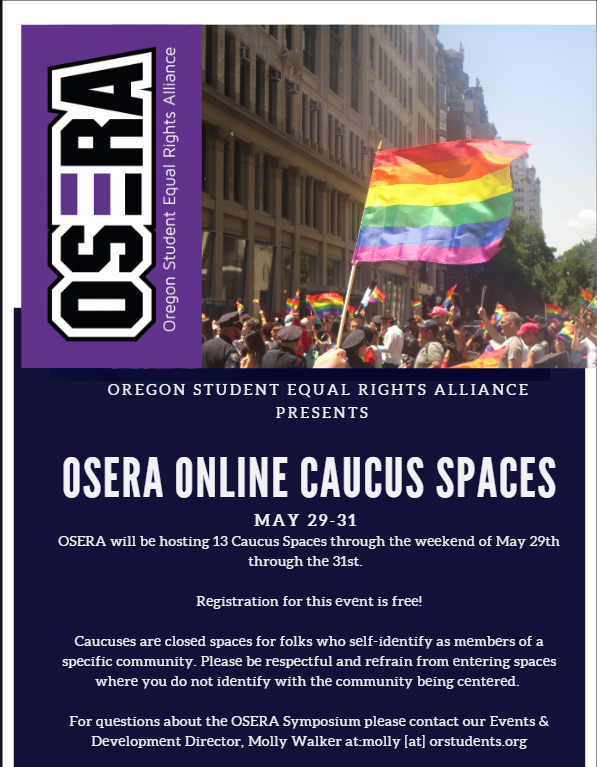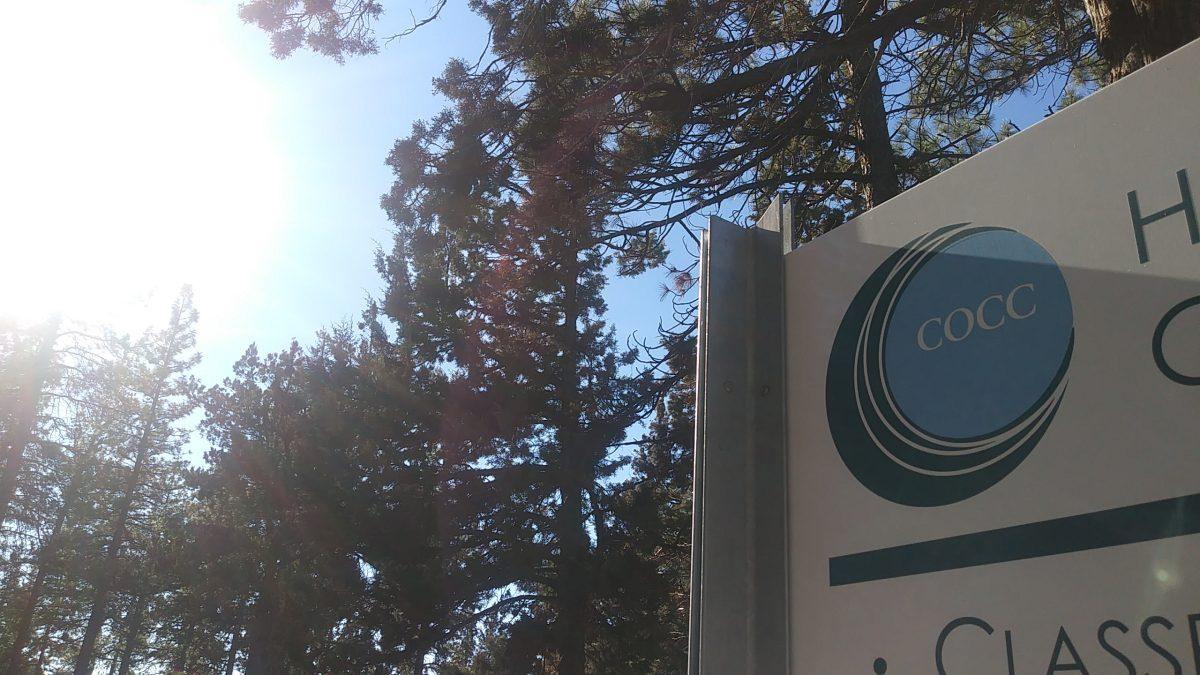Getting tens of thousands of Oregonians through college isn’t easy, and the state government is only giving guidelines.
Oregon is looking to make sure 80 percent of Oregonians have higher education by 2025 but is leaving it up to colleges to figure out how to get there. In 2011, Oregon Legislature passed Senate Bill 253 with the ambitious goal of increasing higher education in Oregon. This bill calls for 40 percent of Oregonians to hold a bachelor’s or advanced degree, 40 percent to have an associate’s degree or a meaningful postsecondary certificate, and all adult Oregonians to hold a high school diploma by the year 2025.
“Overall, the goal of 40-40-20 is to shift the focus from input to outcomes,” said Di Saunders, director of communication and public affairs at the Oregon University System. “It is a stretch goal. Everyone is in the process of moving toward that goal.”
Previously, funding for higher education was determined based on enrollment numbers. However, after the State Board of Higher Education went through the recession, their budget was cut, causing a shift in focus.
“After that, the board didn’t have funds to cover enrollment,” Saunders said. “It was decided on at that point that we would move to look at graduates and fund for graduates.”
This newer system has advantages, according to Saunders. Colleges have now turned to focus their attention on getting students a degree.
“[40-40-20] is real and is top of mind for many, but it goes back to funding,” Saunders said. “At the state level we can now fund for graduates instead of enrollment and those are often widely varying numbers.”
What COCC is doing
Locally, Central Oregon Community College has already begun to take steps toward an outcome-based educational model, according to COCC president Jim Middleton.
“We have seen mild growth already,” Middleton said. “Part of that is linked with the past enrollment increase producing more graduates.”
COCC has their “feet grounded in all three parts of 40-40-20,” according to COCC president, Jim Middleton.
“A significant number of students nationally take coursework at a community college,” Middleton said. “We will continue to offer a low cost pathway to the OSU-Cascades degree than if all the courses are taken at the university. We think we offer a great savings and ease of transfer.”
The college is currently looking at automatic rewarding that would work with internal students and partner universities. Currently the only way students get their degree is to apply for it. If students have all the credits to graduate but don’t apply to do so, they currently don’t receive their degree.
“We’re now trying to set up software systems so when students do cross the threshold there is that automatic rewarding system in place,” Middleton said.
This could also affect students who are close to an associate’s degree to move to the university, pick up those courses at the university and then still receive their degree from the community college.
The college has also been increasing their concurrent enrollment partnership with local high schools, which takes current high school students into college classes. Part of this is done under the dual-enrollment program where COCC certifies the high school teacher and they teach college classes to students at the high school as part of their high school teaching assignment.
Additionally, several high schools are doing advanced diploma programs, where students stay in high school for five years and the fifth year is the first year of their college experience that is paid for by the school.
“That’s one of the major initiatives that gives students a real bridge to college-level learning while still in high school,” Middleton said.
COCC is also trying to expand outreach to “less traditional” students, according to Middleton. Nationally, the college rate for Native Americans and Hispanics is lower than Caucasians and Asians. COCC is encouraging more enrollment and graduates in these minorities through the Native American student program and Latino program. COCC is also seeking to do orientation and create support groups, as well as provide outreach about financial aid.
“If there are aren’t a lot of individuals in your family who’ve gone to college before and have experienced the joys and challenges of financial aid … that can be daunting,” Middleton said. “Part of success is demystifying that process.”
The residence hall, advisors and orientations bring the numbers up
Another part of overall student success is peer support groups — high and middle school students spending weeks in the summer at according to Middleton, which 2015’s new residence hall will support.
“Data shows that students who are in a well maintained student housing setting outperform those who aren’t,” Middleton said. “Part of what we can do with new housing is look at what programs would be successful summer programs.”
These programs would be for high school and middle school students and would encourage higher education earlier in students educational experience.
Academic software GradTracks is another tool for reaching 40/40/20. GradTracks was implemented a few years ago and allows students to check progress on degrees and closely monitor achievement. It is also beneficial for students considering switching degrees, according to Middleton.
“This helps students not take courses that don’t count and additionally helps to assess how big of a challenge it would be if they decided to shift to a different degree,” Middleton said.
Another crucial part of moving to a graduate based model is having academic advisors, according to Middleton.
“A lot of success is based on getting better information out to students and assisting advisors as they work with advisees to get them to the finish line,” Middleton said.
All COCC advisors complete extensive training, according to Middleton, and many of the advisors are also faculty members in that department. Middleton believes faculty advising is one of the college’s strengths in moving toward student outcomes.
“Faculty know the program, they know the disciplines, and frankly, they know the students better than if you had a separate counseling system,” Middleton said.
The implementation of Bobcat Orientation, launched full scale for the first time in fall 2014, has also been encouraging early succes. This is a day-long program for new students the Friday before term starts.
“This really tries to get students started on the right track the first week and demystify that experience,” Middleton said.
Currently, the college is working on the freshman experience program. Students who reach the 15 and 30 credit plateaus have a much higher percentage of making it to the finish line, according to Middleton. The freshman experience program looks at implementing academic, personal and study skills support for students in their first year.
There are currently also learning communities where there is a cohort of students taking two or more sources that have a bridge in content and those are meshed as one section with a teaching team.
“That creates deeper peer bonding between students and enriches the depth of understanding, which ultimately leads to success,” Middleton said.
Funding for success
Saunders believes campuses need to be able to react quickly to company needs to keep Oregon graduates in Oregon.
“If Oregon organizations all the sudden need more engineers, our colleges need to be able to step up and meet that need so we can keep more of our graduates here and those companies then won’t have to hire from outside the state,” Saunders said.
Funding is a “large” part of how colleges will achieve this, according to Saunders.
For the 1999-01 biennium, OUS received $755 million, this is the same amount they received for the current biennium. The same amount of funding with more students in the educational arena is not sustainable long term but colleges have “learned to do more with less,” according to Saunders.
“With fewer funds, there are a lot of things universities can’t focus on that they would like to,” Saunders said.
One of those focuses is increasing financial aid. Currently there are many donors that contribute to the financial aid pools at universities to make up for the lack of state funding, according to Saunders.
OUS is currently moving toward a decentralized model. This means the OUS will now have the Higher Education Coordinating Commission be the higher education voice and the current OUS Chancellors office will no longer exist.
Moving to a decentralized model will allow people who are leaders in the industry and who have that knowledge “be a more integral part of the financial process,” according to Saunders.
“This model has been tested and works successfully,” Saunders said.
In 2012, Oregon universities ranked number one in the nation for the fastest percentage increase in enrollment for a five-year period.
“To meet the 40-40-20 goal, we need to really work hard. Everyone is pointed at the same place and it is a very united effort,” Saunders said. “It is attainable, we need to accelerate action on getting Oregonians in colleges and then make sure institutions are meeting the needs of students and the workforce.”
Molly Svendsen | The Broadside
(Contact: [email protected])













